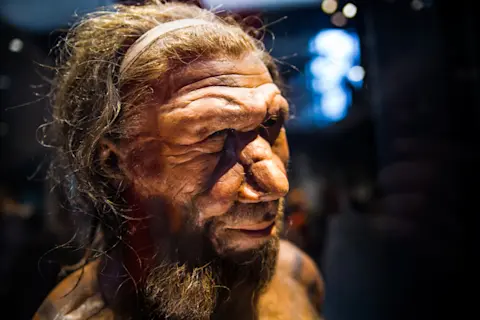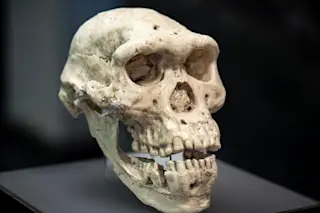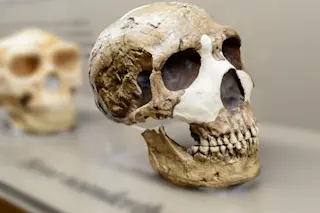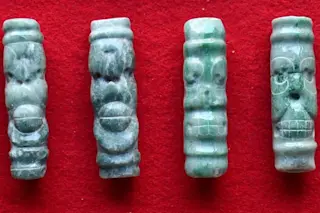We’ve long thought that Homo sapiens outlived Neanderthals because we were more intelligent. Essentially, modern humans entered the scene some 200,000 years ago, then quickly dominated and began our reign at the top of the food chain. Neanderthals were supposedly pushed to extinction by human gumption, and that’s why we survive today.
According to archeologists, this high-handed, simplified version of our human origin is likely untrue. Experts in this field point to a much cloudier view of our evolutionary past based on the rich Stone Age archeology of the Levant.
Where Is the Levant?
Today, the Levant region encompasses the Mediterranean shores of the Middle East. It’s likely that this temperate meld of coastal plain and hill country was actually home to a melting pot of Neanderthals and H. sapiens who lived together for more than 100,000 years, according to Erella Hovers, a professor of prehistoric archaeology at the Hebrew University of Jerusalem.
“I don’t believe that there was a big barrier separating these two groups in the Levant,” says Hovers. “It’s more likely that small groups of both H. sapiens and Neanderthals were constantly moving in and out of the area, and coexisting peacefully.”
Read More: Modern Humans and Neanderthals May Have Cohabitated For 2,900 Years
Neanderthals and Homo Sapiens In the Mediteranean Levant
They were both hunting and gathering populations. Neanderthals moved back and forth to Europe, where they originally evolved; H. sapiens moved back and forth to Africa for the same reason. Hovers says that it’s unlikely that when one group moved through, the other would exit.
“It’s not like they were playing musical chairs and when one group came in the other would leave. When they were in the Levant, these groups likely had territories and were separate but they would probably come in contact with each other from time to time,” she says.
She adds that this prehistoric gathering place was no accident. Both groups ended up in the Levant because it was a favorable place to live that linked Africa to Asia. Its mild climate cultivated ample flora and fauna for feasting.
Read More: Humans and Neanderthals May Have Shared Jewelry Designs
Neanderthals and Humans: More Alike Than Different
Research does not solidify whether these communities co-existed at a certain moment in time. But, says Hovers, when you compare fossils from Neanderthal archeological dig sites and H. sapiens dig sites, the dating is similar, suggesting it would make sense that the groups lived together contemporaneously.
What’s more, the material culture of each group is indistinguishable — they seemed to use similar tools and burial customs. Both hunted with spear-like weapons and ate foods like deer, gazelles, pigs and wild cows. It’s actually hard to tell which material culture belonged to which group, unless you find a fossil specimen right beside a weapon or tool.
Additionally, says Hovers, Neanderthals would have looked different from H. sapiens, but not that different. Research has shown Neanderthals had a relatively short and stocky build, an arched brow and protruding jawbones.
But according to Hovers, the appearance was not so shocking that they never got together with humans. Paleo-genetic evidence has suggested that early Neanderthal and H. sapiens interbreeding most likely happened in the Levant.
We can’t know whether such sexual encounters were forced or coercive, and it’s impossible to know what the different groups thought of each other. But either way, says Hovers, “These were two viable and fertile groups with no reproductive separation between the two populations.”
Read More: How Are Neanderthals Different From Homo Sapiens?
Did Neanderthals and Humans Coexist?
H. sapiens and Neanderthals lived together for thousands of years before Neanderthals went extinct. But, according to anthropologist Oren Kolodny, it wasn’t because of brains. “The material cultures were too similar for it to be the result of intelligence,” he says.
Coexistence likely flourished longer in the Levant because Neanderthals and H. sapiens interbred and therefore Neanderthals adopted some of the immune system defenses that would protect them longer than in other parts of the world.
Read More: Neanderthals Thrived for 400,000 Years, but Then Disappeared
How Did Neanderthals Go Extinct?
Research has shown that diseases were a likely culprit of their extinction. H. sapiens might have brought diseases up from Africa and spread them to a Neanderthal population that had few defenses. According to 2019 research published in Nature Communications, “an asymmetry of disease burden in the contact zone might have favored modern humans, who arrived there from the tropics.”
No matter what caused their end, these two analogous populations likely lived alongside each other for 100,000 years or more before they parted ways. So, the next time you denounce someone for being a Neanderthal, remember they just might be your distant relative’s neighbor. And because they interbred, you yourself are a teeny-tiny bit of a Neanderthal.
Read More: Why Did Neanderthals Disappear?












